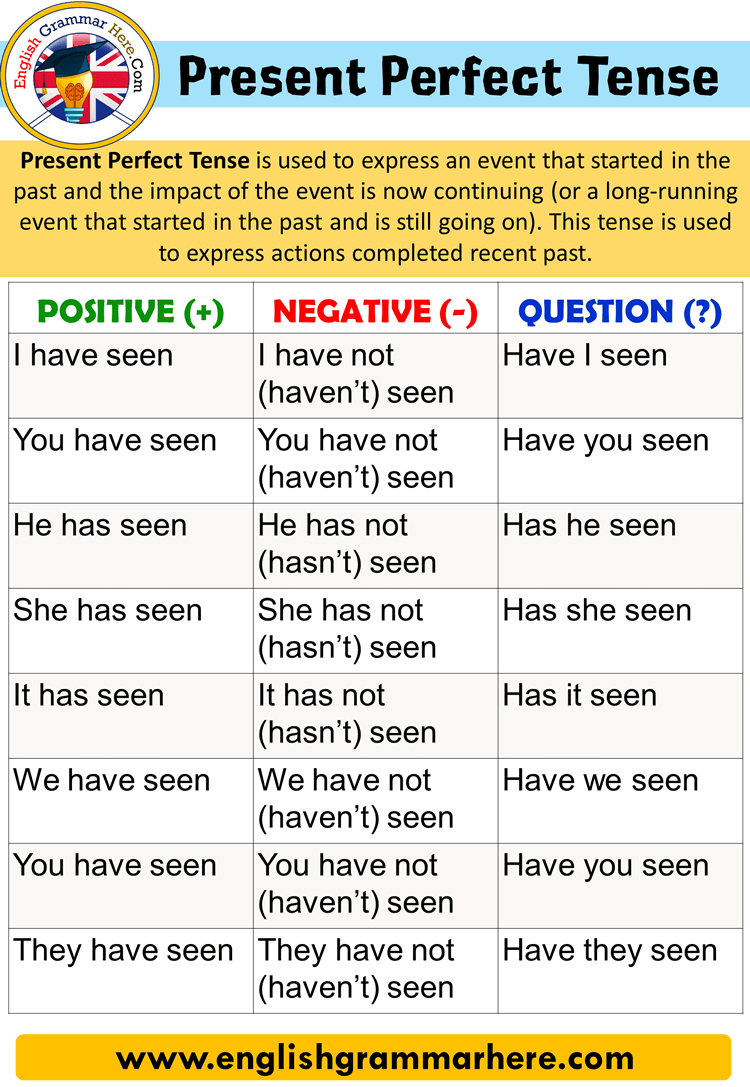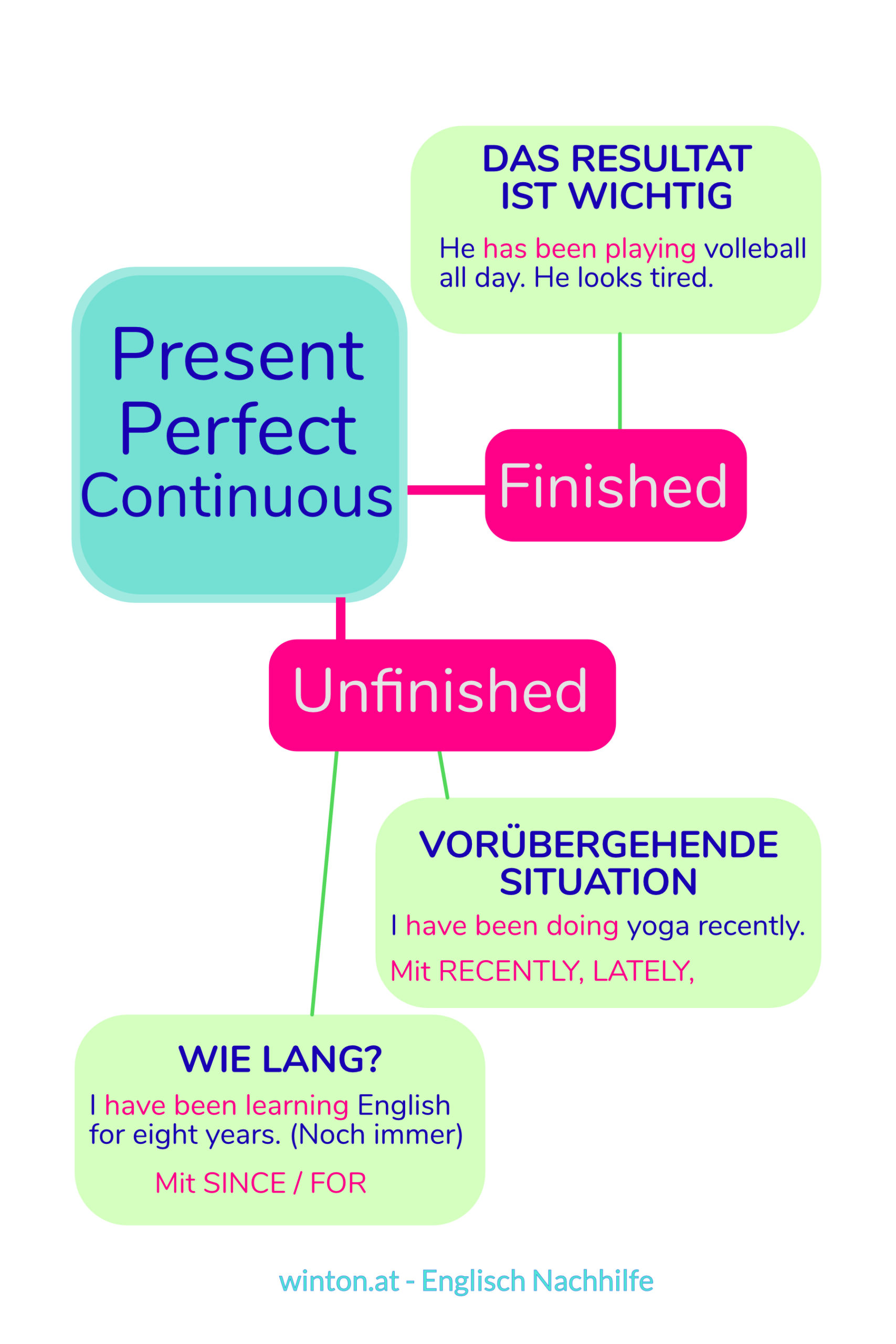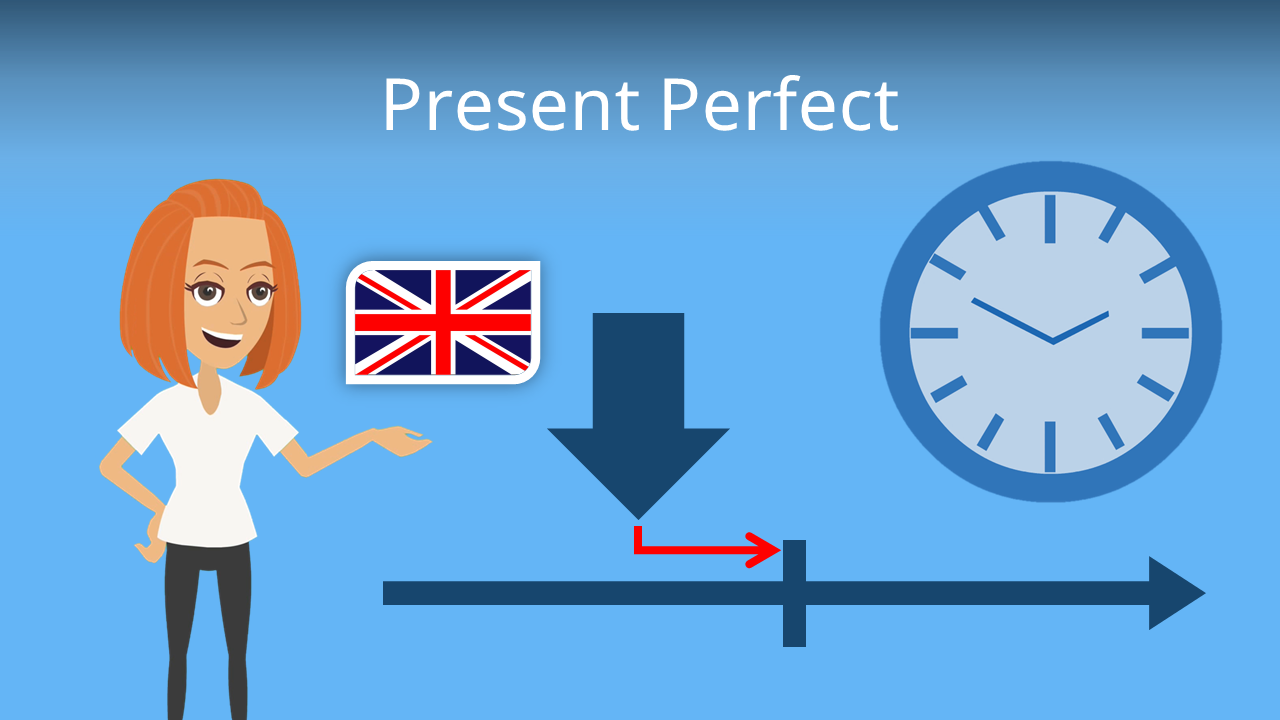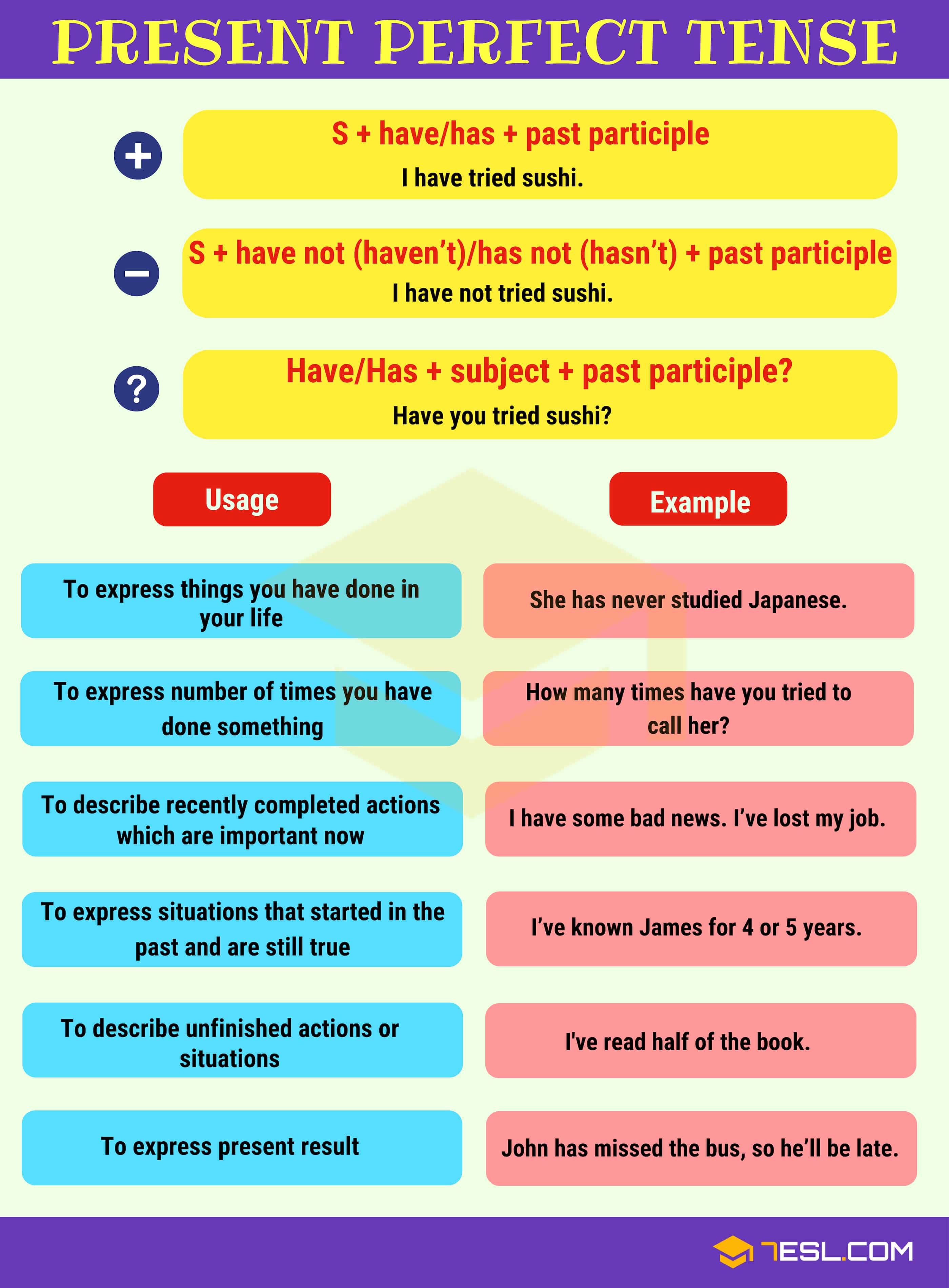
Present Perfect Tense, Using and Examples English Grammar Here
To make the positive present perfect tense, use: 'have' / 'has' + the past participle. Make the past participle by adding 'ed' to regular verbs (for example, 'play' becomes 'played') There are a few verbs that change their spelling when you add 'ed' (for example, 'study' becomes 'studied') We also have some completely irregular verbs.

Present Perfect Continuous Nachhilfe Englisch Wien 22. Bezirk
0:00 / 8:41 Present Perfect Simple Tense - auf Deutsch erklärt EnglischEndlichEinfach 27.5K subscribers Subscribe Share 43K views 3 years ago Englische Grammatik auf Deutsch erklärt MEIN TIPP: In.

Present Perfect • Bildung, Verwendung & Beispielsätze · [mit Video]
More Examples of the Present Perfect Tense. Here are some more examples of the present perfect tense: The board has decided to uphold the appeal. (This sentence carries the connotation that the board continues to uphold the appeal.) I have taken the wrong path. (Connotation: I am still on the wrong path.)

Pin on Schulnotizen
The Oxford Learner's Dictionary defines the present perfect tense as "the form of a verb that expresses an action done in a time period up to the present, formed in English with the present tense of 'have' and the 'past participle' of the verb, as in I have eaten ."

Das present perfect einfach erklärt Einfach Englisch YouTube
Übung 4. Markiere die richtige Aussage zur Verneinung im Present Perfect. Im Present Perfect muss ich für eine Verneinung not vor have / has einfügen. Im Present Perfect können bei der Verneinung keine Kurzformen benutzt werden. Im Present Perfect können bei der Verneinung Kurzformen benutzt werden: haven't / hasn't.

Tandem Activity / Tandembögen zu Aussagen und Verneinungen im Present Perfect
Verbs Present tense Present perfect Present perfect Level: beginner The present perfect is formed from the present tense of the verb have and the past participle of a verb. We use the present perfect: for something that started in the past and continues in the present: They've been married for nearly fifty years.

Present Perfect Arbeitsblätter mit Lösungen Arbeitsblatt Englisch 6 Englisch nachhilfe
The Present Perfect tense is a rather important tense in English, but it gives speakers of some languages a difficult time. That is because it uses concepts or ideas that do not exist in those languages. In fact, the structure of the Present Perfect is very simple. The problems come with the use of the tense.

PRESENT PERFECT / Basics, Verneinung & Fragen erklärt + Übungen Englisch YouTube
Present Perfect, Verneinungen, Grammatikübungen, Englisch Lernen, Übungen. Aufgaben-Nr. 4154Setze das Verb in Klammern in die Lücke und bilde verneinte Aussagesätze im Present Perfect.. Beispiel aufklappen

Present Perfect Tense Definition, Rules and Useful Examples Effortless English
Das present perfect simple wird dann verwendet, wenn ein Ereignis in der Vergangenheit begonnen hat und eine Verbindung zu Gegenwart besteht.. Verneinung. I, you, we, they - have not (haven't) + 3rd form. he, she, it - has not (hasn't) + 3rd form. They haven't tidied up their room so far. - He hasn't finished his homework yet. Fragen. Have.

Grammar present perfect progressive. Worksheet and solution meinUnterricht
#presentperfect #thepresentperfect #grammarbox Dieses Video behandelt die Verwendung und Bildung des Present Perfect Simples: positive und negative Sätze (ke.

Frage und Verneinung im Present Perfect Unterrichtsmaterial im Fach Englisch Fragen
The present perfect tense is an English verb tense used for past actions that are related to or continue into the present. It's easily recognized by the auxiliary verbs (or helper verbs) have and has, as in, "I have gone fishing since I was a child."

60 Sentences Example in Present Perfect Tense Englishtivi
The affirmative form of the Present Perfect Tense is used to express an action or event that has occurred at an unspecified time in the past or that began in the past and continues to the present. The structure of the affirmative form is as follows: Subject + have/has + past participle of the verb. Examples:

Present Perfect (Englisch) Regeln, Bildung und Beispiele
Present Perfect: Aussage, Frage, Verneinung (mit Untertiteln) - YouTube 0:00 / 4:49 Eine kurze und einfache Erklärung zur Bildung und Verwendung von Present Perfect.Click it, like it,.

Englisch Present Perfect Übersicht Unterrichtsmaterial im Fach Englisch Englisch
The present perfect tense is a verb form used to refer to a past action or situation that has a present consequence. It's typically used to indicate experience up to the present, recent actions, or a change that occurred over a period of time.

PRESENT PERFECT Merkblatt (mehrere Versionen) Unterrichtsmaterial im Fach Englisch
1. Für Handlungen, die bis in die Gegenwart reichen. I have lived in Hamburg since 2010. - Ich lebe seit 2010 in Hamburg (und lebe immer noch dort). 2. Für Handlungen, die noch eine direkte Auswirkung auf die Gegenwart haben. Are you hungry? - No, I've just eaten. - Hast du Hunger? - Nein, ich habe gerade gegessen (und bin deshalb satt). 3.

Contoh Kalimat Simple Present Perfect Tense Berbagai Contoh
Du verwendest das Present Perfect (auch: Present Perfect Simple), wenn du über eine Handlung aus der Vergangenheit sprichst, die einen Einfluss auf die Gegenwart hat. Aber wie wird das Present Perfect gebildet? Du nutzt dafür have oder has und fügst das Past Participle (Infinitiv + -ed) hinzu. Hier siehst du 3 Beispiele für Present Perfect Sätze: